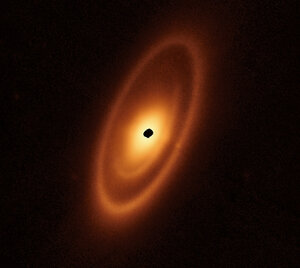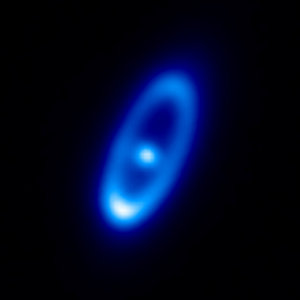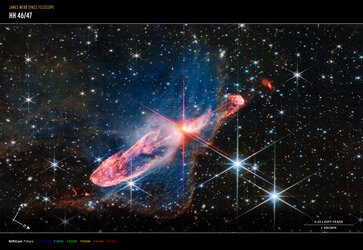

Webb inspects dusty debris disc around Fomalhaut (annotated)
This image of the Fomalhaut system, captured by Webb’s innovative Mid-Infrared Instrument (MIRI), half of which was contributed by Europe, shows compass arrows, scale bar, and colour key for reference. Labels indicate the various structures. At right, a great dust cloud is highlighted and pullouts show it in two infrared wavelengths: 23 and 25.5 microns.
The north and east compass arrows show the orientation of the image on the sky. Note that the relationship between north and east on the sky (as seen from below) is flipped relative to direction arrows on a map of the ground (as seen from above).
The scale bar is labelled in astronomical units, which is the average distance between Earth and the Sun: 150 million kilometres. The outer ring is about 240 astronomical units in diameter.
This image shows invisible mid-infrared wavelengths of light that have been translated into visible-light colours. The colour key and labels show which MIRI filters were used when collecting the light.
[Image description: An image labelled James Webb Space Telescope: Fomalhaut. An orange oval extends from the 7 o’clock to 1 o’clock positions. It features a prominent outer ring, a darker gap, an intermediate ring, a narrower dark gap, and a bright inner disc. At left, a series of labels with lines indicate the individual features. From inside to outside, they are: inner disc, inner gap, intermediate belt, outer gap, outer ring, and halo. In the outer ring at about the 3 o’clock position, a white box surrounds a clump of material labelled a great dust cloud. Two pullouts to the lower right show the clump in blue, using data at 23 microns, and orange, using data at 25.5 microns.]





